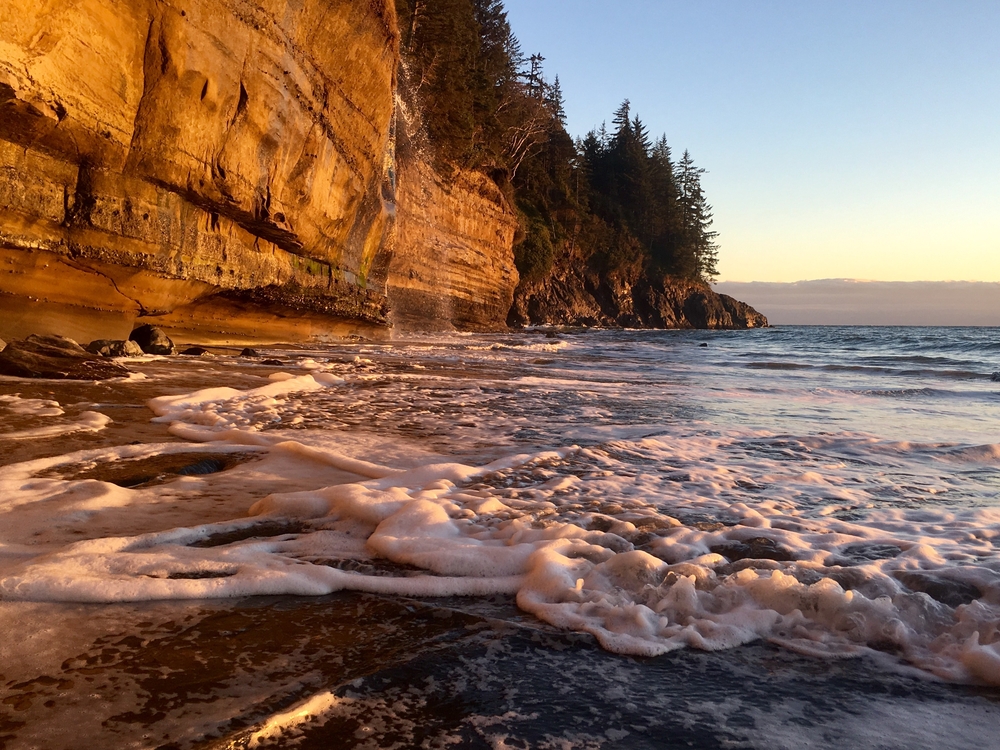
Canada is full of forests, but very little of the country’s landmass is actual rainforest. However, Vancouver Island is an exception. Full of moss, ferns, fungi, and towering trees, the forests of Vancouver Island are verdant and lush, the symbolic lungs of the country breathing in mist and whispering ancient secrets.
Vancouver Island is a perfect encapsulation of the natural makeup of the Pacific Northwest. Surrounded by whale-filled ocean waters, it’s covered in mountain peaks, wetlands, temperate rainforest, rivers, and streams. It’s also home to a huge range of wildlife — not just the bears and fish that are well-known emblems of the region, but wolves, elk, deer, otters, and all kinds of birds.
Vancouver Island is full of places of spiritual significance and long-held traditions for First Nations, and to visitors, this will come as no surprise: anyone who lays eyes on this place can tell that it is sacred.

Rugged mountains blanket much of the island’s surface area, and are bordered by valleys that were chiseled out of the rock by glaciers millennia ago. On a map, Vancouver Island may look small next to the hulking landmass of Canada, but as views like this show, it’s one of the most epic stretches of unspoiled nature on Earth.

The district of Tofino is known as a surfer’s paradise, but pull back, and it’s clear that this sprawling coastline dotted with islands and covered with dense forests is a natural wonder for all nature lovers.

Henderson Lake has been recorded as the wettest place in North America, averaging 256 inches per year, and all of that moisture helps to support the abundant plant life in the area. The lake is also the home of the Thunderbird, an important figure to the Nuu-chah-nulth First Nations, said to control thunderstorms.

Wetlands are vital for wildlife, and they serve other ecological functions, such as regulating atmospheric gases, filtering water, and storing floodwater. Birds and fish particularly rely on wetlands, which are abundant on the eastern side of Vancouver Island.

Vancouver Island is a life-sustaining region for black and grizzly bears, who feed on the salmon that are copious in the area. Each year, the salmon return from the ocean to the streams and rivers where they were born to spawn, and it is from this annual salmon run that bears get much of the bulk that sustains them through the winter.

Something about the forest landscapes of Vancouver Island feels distinctly sacred. These natural areas have long held an important place in the spiritual lives, as well as the livelihoods, of local First Nations. These river-crossed landscapes are places of awe-inducing stillness and reverent quiet.

One of the smallest populations of orcas in the world, Southern Resident Orcas, are often spotted off the coast of Vancouver Island and in the Salish Sea. There are just 77 animals left in this endangered population, though there are also Northern Resident Orcas that can be spotted around the northern half of the island.

There are plenty of turquoise-green streams and rivers embedded in the rocks of the island interior, which make amazing swimming spots and great places to take in the incredible scenery.

Mystic Beach lives up to its name. This isolated, rocky beach lies along the Juan de Fuca Marine Trail, a 47-kilometre hiking trail through the wilderness that winds along several beaches on the island’s southwest coast. Striped sandstone cliffs line the coast, making a striking canvas for the golden light of the sun setting over the water.
